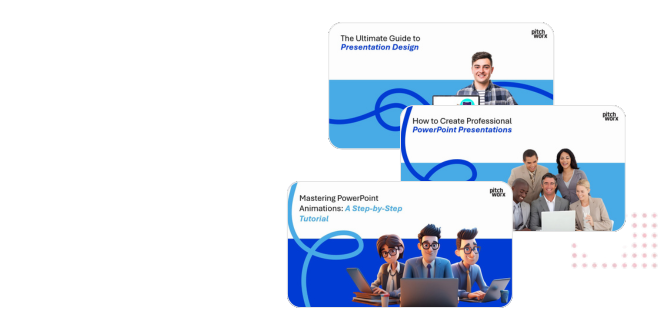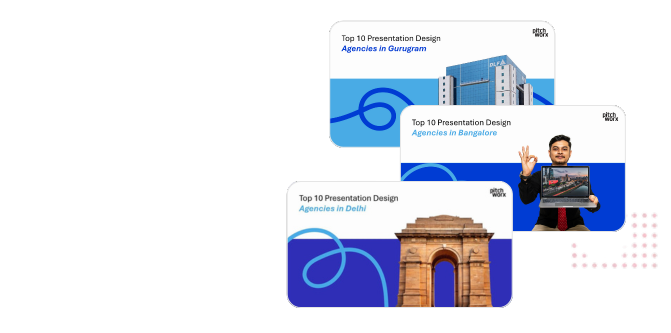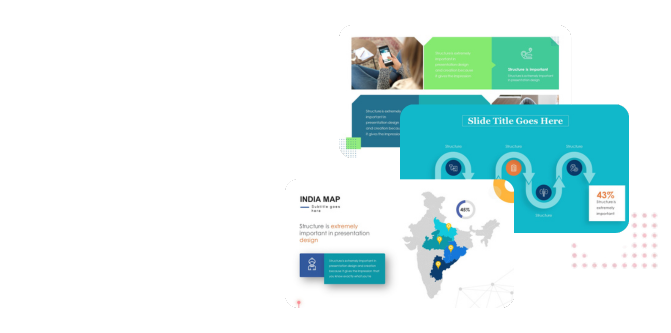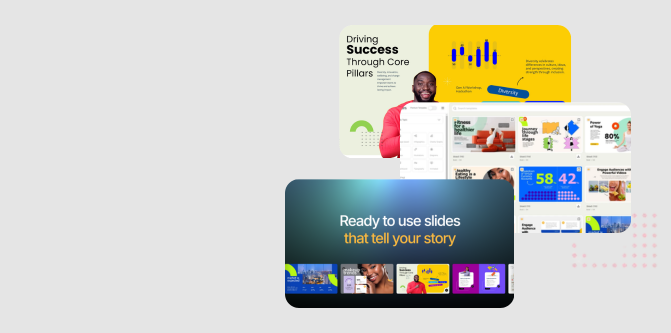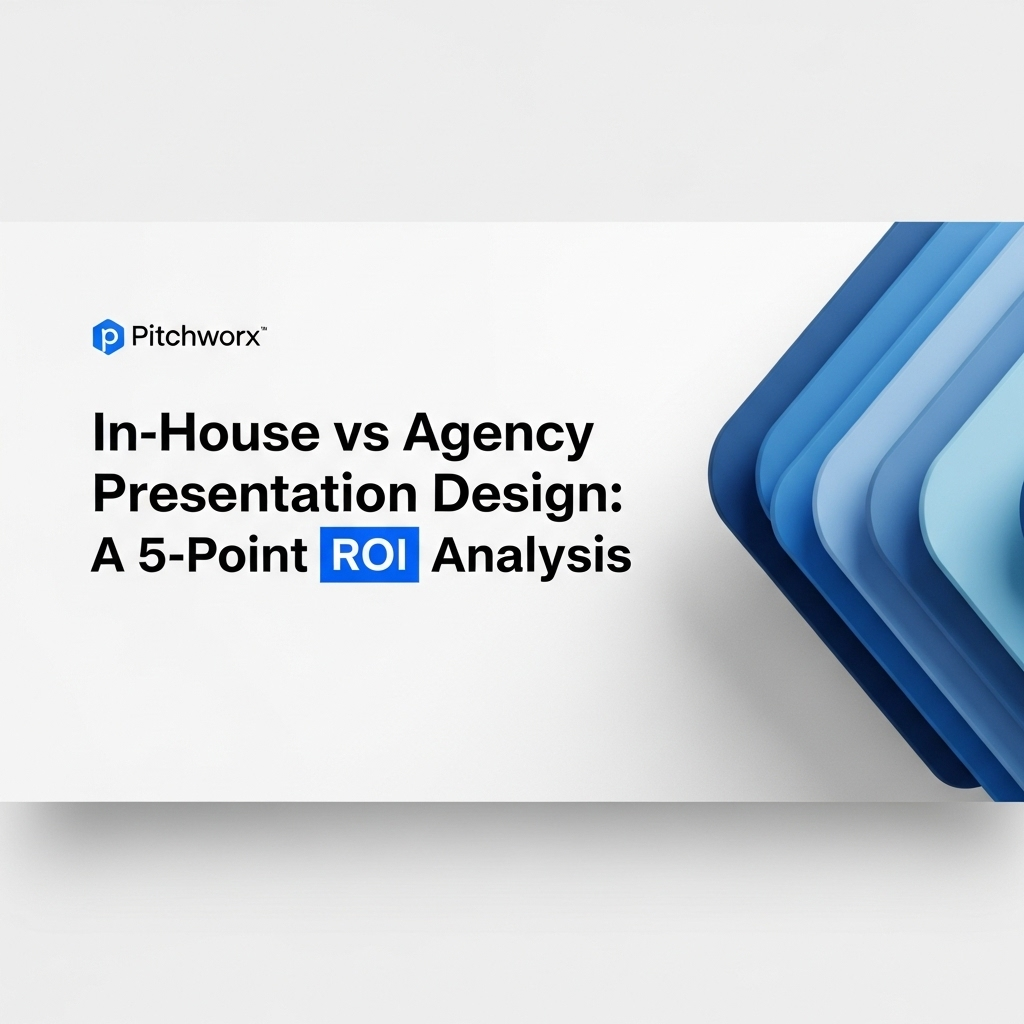The board meeting is in two weeks. The product launch, a week after. A critical investor update is on the calendar. Each event demands a presentation that doesn’t just inform, but persuades. This is a familiar pressure point for executives, where the decision between leveraging an in-house team or hiring a specialized agency comes into sharp focus. The choice isn’t merely about budget allocation; it’s a strategic decision that directly impacts efficiency, brand perception, and ultimately, return on investment. The debate over In-House vs Agency Presentation Design often overlooks the nuanced financial and operational realities, focusing on superficial costs rather than total value. This analysis will dissect the problem, explore the hidden costs, and provide a clear framework for making a decision that aligns with your strategic goals. Whether you’re a startup seeking funding or a Fortune 500 defending market share, understanding the true ROI of your presentation design choice is crucial for success. Our experience at PitchWorx shows that the right approach can transform a presentation from a routine update into a powerful business asset, and we believe our presentation design service provides a strategic advantage.
Quick Answer
In-House vs Agency Presentation Design is a strategic choice impacting budget and outcomes. Effective communication, which presentations drive, can boost team productivity by 20-25% according to a McKinsey study. To decide, leaders must analyze:
- The total cost of ownership beyond salaries.
- The opportunity cost of tasking internal teams with specialized design work.
- The strategic value of on-demand expertise and speed-to-market.
Table of Contents
- The Core Dilemma: Unpacking the True Cost of Presentation Design
- The Hidden Costs of an In-House Team
- The Agency Advantage: A Strategic Investment in Expertise
- A 5-Point ROI Framework for Your Decision
- Making the Final Call: A Decision Matrix
- When Does an In-House Team Make Sense?
- Frequently Asked Questions
- Conclusion: Moving Beyond Cost to Strategic Value
The Core Dilemma: Unpacking the True Cost of Presentation Design
The central problem many organizations face is a fundamental misunderstanding of “cost.” When comparing an in-house designer’s salary to an agency’s project fee, the salary often appears lower on a spreadsheet. This simple math is dangerously misleading. It fails to account for the Total Cost of Ownership (TCO) associated with an internal employee and, more critically, the opportunity cost of not accessing specialized, external expertise for high-stakes communications.
A presentation is rarely just a collection of slides; it’s a vehicle for strategy, a tool for persuasion, and a representation of your brand’s credibility. The “cost” of a poorly designed investor deck isn’t the designer’s salary—it’s the lost funding. The “cost” of a confusing sales presentation isn’t the hours spent making it—it’s the lost contract. This reframing is essential. The dilemma isn’t just about who makes the slides, but about which model provides the highest strategic return for the specific communication challenge at hand.
The Hidden Costs of an In-House Team
The true expense of an in-house designer or team extends far beyond their monthly paycheck. These ancillary costs are the root cause of many miscalculated budgets and are often overlooked until they become significant financial drains. Recent data from a Gartner report on IT trends highlights that 60% of infrastructure and operations leaders will face cost overruns, a principle that applies directly to the operational overhead of internal teams.
The Financial Overheads You’re Not Tracking
- Recruitment and Onboarding: The time and resources spent finding, interviewing, and training a qualified designer are substantial. This includes recruiter fees, job postings, and the man-hours of your existing team.
- Salaries, Benefits, and Taxes: A designer’s salary is typically only 60-70% of their total cost. You must add benefits (health, retirement), payroll taxes, and paid time off.
- Software, Hardware, and Subscriptions: Professional design requires expensive tools. This includes Adobe Creative Suite, premium stock photo/video subscriptions, font licenses, and powerful hardware, all of which require ongoing fees and upgrades.
- Training and Development: The design landscape evolves rapidly. To stay current, your in-house team needs continuous training on new tools, techniques, and trends, which means course fees and time away from projects.
The Operational Inefficiencies
Beyond direct costs, operational factors can erode the value of an in-house team. The most significant is utilization. Presentation design needs often come in waves, tied to quarterly reports, sales cycles, or conferences. This leads to a “feast or famine” workload.
- Idle Time: During lulls, you are paying a full-time salary for underutilized talent. This downtime is a direct, unrecoverable cost.
- Lack of Specialization: An in-house designer is often a generalist. They may be great at general graphic design but lack the specific narrative, data visualization, and persuasive structuring skills required for a high-impact C-level presentation. Our specialized PowerPoint presentation design services focus solely on this niche.
- Creative Stagnation: Working on one brand can lead to an echo chamber of ideas. An internal designer may struggle to bring fresh, outside perspectives that challenge the status quo and truly innovate.
The Agency Advantage: A Strategic Investment in Expertise
Engaging a presentation design agency shifts the conversation from “cost” to “investment.” Instead of paying for a person, you are investing in a specific outcome. This model is designed to maximize value and minimize the hidden costs and inefficiencies inherent in the in-house approach. An agency provides a scalable, on-demand solution that aligns costs directly with business needs.
From our experience at PitchWorx, clients gain the most value from three core agency benefits:
1. Access to a Specialized Talent Pool
When you partner with an agency, you’re not just hiring one designer. You gain access to a collective of specialists: content strategists, data visualization experts, animators, graphic designers, and project managers. This team-based approach ensures every facet of your presentation is handled by an expert. If you need compelling corporate decks one month and an animated product demo the next, the agency has the right talent ready without any need for new hiring.
2. Speed, Scalability, and an Objective Perspective
Agencies are built for speed and scale. Multiple designers can work in parallel to meet aggressive deadlines that would be impossible for a single in-house designer. When an urgent, high-stakes project arises, an agency can absorb the workload without disrupting your internal team’s priorities. Furthermore, an external partner provides a crucial objective viewpoint. They can challenge internal assumptions and identify messaging gaps that insiders might miss, leading to a clearer and more impactful final product.
3. Predictable Costs and Guaranteed Outcomes
With an agency, you work with a defined scope and a fixed project fee. There are no surprise costs related to benefits, software, or downtime. You pay for the work delivered. This financial predictability is invaluable for budgeting and forecasting. Moreover, reputable agencies operate on a results-driven model. Their success is tied to your success, ensuring a level of quality, polish, and commitment that is focused on delivering a powerful and effective communication tool.
About PitchWorx
With 13+ years of presentation design experience and 150,000+ slides created, PitchWorx is an ISO 27001 certified agency trusted by Fortune 500 companies across global markets. Our integrated team of specialists ensures every presentation achieves its strategic objective.
A 5-Point ROI Framework for Your Decision
To move beyond a simple cost comparison, use this five-point framework to evaluate the true return on investment for both in-house and agency models. This structured approach helps quantify the qualitative benefits and reveals the most financially sound option for your organization.
1. Direct Cost Analysis (Total Cost of Ownership)
This is the foundational analysis, but it must be comprehensive. Compare the fully-loaded cost of an in-house designer against a typical agency project fee or retainer. Be sure to amortize one-time costs like recruitment over a 12-month period.
| Cost Factor | In-House Team (Annual Estimate) | Agency (Annual Estimate) |
|---|---|---|
| Salary / Project Fees | $85,000 | $60,000 (based on 4 major projects) |
| Benefits & Taxes (~25%) | $21,250 | $0 |
| Software & Subscriptions | $2,500 | $0 (included in fee) |
| Recruitment & Training | $5,000 | $0 |
| Estimated Total Cost | $113,750 | $60,000 |
Note: Figures are illustrative estimates and will vary based on location and scope.
2. Opportunity Cost of Internal Resources
What is the value of the work your team members are not doing while they are building presentations? If your marketing manager, a subject matter expert, spends 20 hours on a slide deck, that’s 20 hours not spent on lead generation or strategy. The same McKinsey research cited earlier found that improved communication and collaboration can increase productivity by 20-25%. An agency frees up your internal experts to focus on their core, revenue-generating functions, delivering a significant, albeit indirect, ROI.
3. Speed-to-Market and Agility
Calculate the potential revenue or advantage gained by launching a campaign or pitching an investor weeks earlier. An agency’s ability to turn around high-quality presentations quickly can directly impact business agility. This is particularly crucial for time-sensitive materials like investor pitch decks where windows of opportunity can be brief.
4. Quality, Brand Impact, and Conversion
This is harder to quantify but immensely important. A professionally designed presentation enhances brand perception and credibility. A slight increase in conversion rate on a sales deck or a higher valuation from an investor pitch can deliver a return that dwarfs the entire cost of the design project. A/B testing message clarity or tracking audience engagement can provide metrics here.
5. Risk Mitigation and Scalability
What is the cost of an key in-house designer resigning before a major event? Or the cost of turning down an opportunity because your team lacks bandwidth? An agency model mitigates these risks. It provides a stable, scalable resource that is immune to employee turnover and can ramp up or down based on your exact needs.
Making the Final Call: A Decision Matrix
To simplify your decision, consider your organization’s needs across two key axes: Presentation Volume and Strategic Importance. Plot where your typical needs fall to get a clearer picture of the best-fit model.
Low Volume / Low Strategic Importance
(e.g., internal team updates, routine reports) – Standard templates or a marketing coordinator can handle these tasks efficiently.
High Volume / Low Strategic Importance
(e.g., standard sales proposals, weekly marketing updates) – If the workload justifies a full-time role and creativity is less critical than consistency.
Low Volume / High Strategic Importance
(e.g., investor pitches, keynote speeches, board meetings) – The ideal scenario for an agency. Maximum impact is needed for critical, infrequent events.
High Volume / High Strategic Importance
(e.g., enterprise sales teams, frequent product launches) – A retainer with an agency ensures consistent access to top-tier talent, blending cost-efficiency with strategic power.
When Does an In-House Team Make Sense? An Honest Assessment
An agency is not always the answer. An in-house designer or team can be the more effective choice under specific circumstances. It’s important to recognize these scenarios to make a truly balanced decision.
Consider the in-house route if your organization meets most of these criteria:
- High Volume of Templated Work: If your primary need is producing a large quantity of presentations that follow a strict, pre-defined template with minor content changes (e.g., weekly performance reports), an in-house resource can be more cost-effective.
- Deep Institutional Knowledge is Paramount: For highly complex or technical industries where extensive, daily immersion in the subject matter is required to even begin the design process, an embedded team member may have an advantage.
- Sufficient and Consistent Workload: You have a predictable pipeline of design work that can keep a full-time employee utilized at 80% or more, minimizing costly idle time.
- Budget for Full Support: You have the budget not just for salary, but for the necessary software, top-tier hardware, stock subscriptions, and ongoing professional development to keep your designer’s skills sharp.
A common mistake we see is companies hiring an in-house designer and expecting agency-level strategic output for high-stakes projects. It’s crucial to align the role with the need. An in-house designer is excellent for maintaining brand consistency in day-to-day materials; an agency excels at elevating brand messaging for moments that matter most. You can see examples of such moments in our portfolio of work.
Related Services
Frequently Asked Questions
What is the typical cost difference between in-house and agency?
While it varies, the fully-loaded annual cost of an in-house designer (salary, benefits, software, etc.) can often be 50-100% higher than the cost of engaging an agency for several key projects per year. The agency model provides cost efficiency by eliminating overheads like idle time, benefits, and recruitment, allowing you to pay only for the productive output you need.
How do you measure the ROI of professional presentation design?
ROI can be measured through both quantitative and qualitative metrics. Quantitatively, track conversion rates on sales decks, success rates for investor pitches (funding secured), or adoption rates of new strategies presented internally. Qualitatively, measure audience engagement, message clarity (through feedback), and enhanced brand perception. The ultimate ROI is achieving the business objective the presentation was designed to support.
What is the biggest mistake companies make when choosing?
The most common mistake is making the decision based solely on a surface-level comparison of a salary versus a project fee. This ignores the significant hidden costs of an in-house employee and, more importantly, the immense opportunity cost of using non-specialized resources for high-stakes communication. The focus should be on total value and strategic impact, not just the initial price tag.
How does an agency ensure brand consistency?
Professional agencies begin any engagement with a thorough discovery process. They will dive deep into your brand guidelines, messaging pillars, and visual identity. At PitchWorx, we create a dedicated client profile that documents all brand assets, preferences, and past feedback, ensuring that every slide we produce feels like a natural extension of your brand, maintaining consistency across all projects.
What is the onboarding process like with a design agency?
The onboarding process is typically streamlined for efficiency. It starts with a kickoff call to define goals, scope, and key messages. You will share your brand guidelines, existing content, and any raw data. The agency then assigns a dedicated project manager and creative team who will establish a timeline and communication cadence, handling all the creative heavy lifting from there.
Can an agency handle confidential information securely?
Yes, reputable agencies prioritize security. Look for certifications like ISO 27001, which is the global standard for information security management. PitchWorx is ISO 27001 certified, meaning we adhere to strict protocols for data handling, confidentiality, and security. We regularly sign Non-Disclosure Agreements (NDAs) and use secure platforms for file sharing and communication to protect our clients’ sensitive information.
Conclusion: Moving Beyond Cost to Strategic Value
The In-House vs Agency Presentation Design decision is not a simple line item in a budget; it’s a strategic choice about how to best allocate resources for maximum impact. While an in-house team can be effective for high-volume, standardized work, the agency model provides unparalleled value for high-stakes presentations where expertise, speed, and an objective perspective are critical. By using a comprehensive ROI framework that accounts for hidden costs, opportunity costs, and strategic benefits, you can make an informed decision that elevates your communications from routine tasks to powerful business drivers.
Ultimately, the right partner—whether internal or external—is the one that helps you communicate your message with clarity, creativity, and conviction. When the stakes are high, investing in specialized expertise is one of the surest ways to secure the outcome you desire.
Ready to elevate your presentations with strategic design? Our presentation design services help businesses across global markets. View our case studies to see the results.




